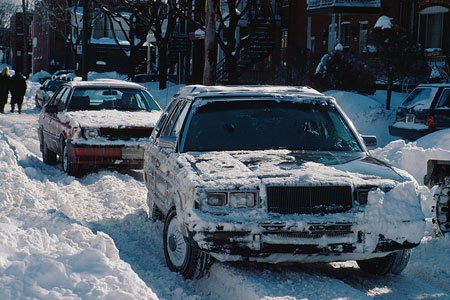TOWSON, Md. — With recent icy conditions, freezing rain and snowfall, commuters in the region are urged by AAA Mid-Atlantic to consider their options and to use extreme caution, if they must drive during these types of conditions.
“The first rule of thumb during severe winter weather is not to drive unless it is absolutely necessary,” said Ragina Cooper Averella, Public and Government Affairs Manager for AAA Mid-Atlantic. “Motorists should remember that cars and ice don’t mix and driving a car on cold, slippery surfaces is an extremely dangerous activity.”
If you must drive, AAA Mid-Atlantic recommends the following winter driving tips:
Prepare Your Vehicle for Use in Ice and Snow— Be sure your vehicle is ready for winter driving. All weather or winter radial tires with excellent tread are necessary. Additionally, excellent windshield wipers with a full reservoir of wiper fluid are essential for visibility. The Mid-Atlantic Foundation for Safety and Education’s Winter Car Care Checklist can help determine a vehicle’s winter maintenance needs. Many of the items on the list can be inspected by a car owner in less than an hour, but others should be performed by a certified technician.
De-Icing A Car— Keep an extra ice scraper in your home should your ice scraper become frozen in the vehicle overnight. De-icing fluid should also be kept indoors should your door locks become frozen. Removing snow and ice from your car before leaving home improves visibility and makes your car lighter and more responsive.
When To Drive— If conditions are icy, AAA Mid-Atlantic advises motorists to stay off the roads until road crews have treated the roads for ice and then not until conditions are favorable for the commute. Nearly one-quarter of weather related vehicle crashes occur on snowy, slushy or icy pavement, resulting in more than 1,300 deaths and 116,800 people injured annually, according to the Federal Highway Administration.
Reduce your speed and take your time so that you will have more time and distance to react to road conditions— Increase your following distance so that you will have more time and distance to react to road conditions and events in front of you. Watch for ice, deer, and other problems that come with the season.
Use extra caution on bridges and overpasses— Bridges and overpasses freeze first and melt last. Therefore, use extra caution as the roadway leading up to the bridge may appear fine but the bridge itself could be a sheet of ice.
Accelerate slowly— Traction is the greatest just before the wheel starts to spin; therefore accelerating slowly will increase your grip on the road.
Brake slowly and gently— Slamming on the brakes on ice or snow covered roads dramatically increases your risk of losing control of your vehicle. When braking on ice and snow, remember what type of braking system you have:
*With anti-lock brakes, keep the pedal depressed and do not pump the brakes— the braking system will do that for you.
*If you do not have anti-lock brakes, then apply the brakes firmly. If the brakes start to lock up, slowly release the brake pedal until the tires are no longer skidding and you can feel them braking properly again.
Increase following distances— Normal following distances of three to four seconds for dry pavement should be increased to eight to 10 seconds when driving on icy surfaces. This extra time will allow for extra braking distance should a sudden stop become necessary. If driving on a four-lane highway, stay in the clearest lane; avoid changing lanes and driving over built-up snow.
Do Not Use Cruise Control and Avoid Tailgating— Do not use cruise control when driving on any slippery surface. By not using cruise control, you will be able to respond instantly when you lift your foot off the accelerator.
If you skid on a slick surface, don’t panic— To regain control of your vehicle, you have to remain calm. First, take your foot off the brake or accelerator. Second, fight the instinct to fight the car and steer into the direction it is traveling to regain traction. Third, begin to accelerate slowly.
Drive defensively and look ahead— Try to anticipate when you might need to change lanes, make a turn, or react to the action of another driver— and act a little earlier than usual.
Guard against SUV overconfidence— Four-wheel-drive vehicles do a good job gaining traction initially and avoiding getting stuck, but once they are moving, they have the same difficulty keeping control and stopping as other vehicles and they are far more prone to roll-overs than other kinds of vehicles.
Emergency Road Kit— AAA Mid-Atlantic urges motorists to store a winter weather kit in their car. Winter weather driving kits should include: a blanket, ice scraper, flares/reflective triangles, flashlight with extra batteries, jumper cables, bag of abrasive material such as cat litter, shovel, cloth/paper towels, and a fully charged cell phone. Check tires, wiper blades and car batteries before hitting the road.
Drive Distraction Free— It is also important when driving in winter conditions to drive distraction-free and in the right frame of mind. The AAA Foundation for Traffic Safety found that looking away from the road for just two seconds doubles your risk of being in a crash. AAA recommends if you are with a passenger, enlist the passenger’s help to carry out activities that would otherwise distract you from driving safely.
For more information, visit the website: www.AAA.com.
